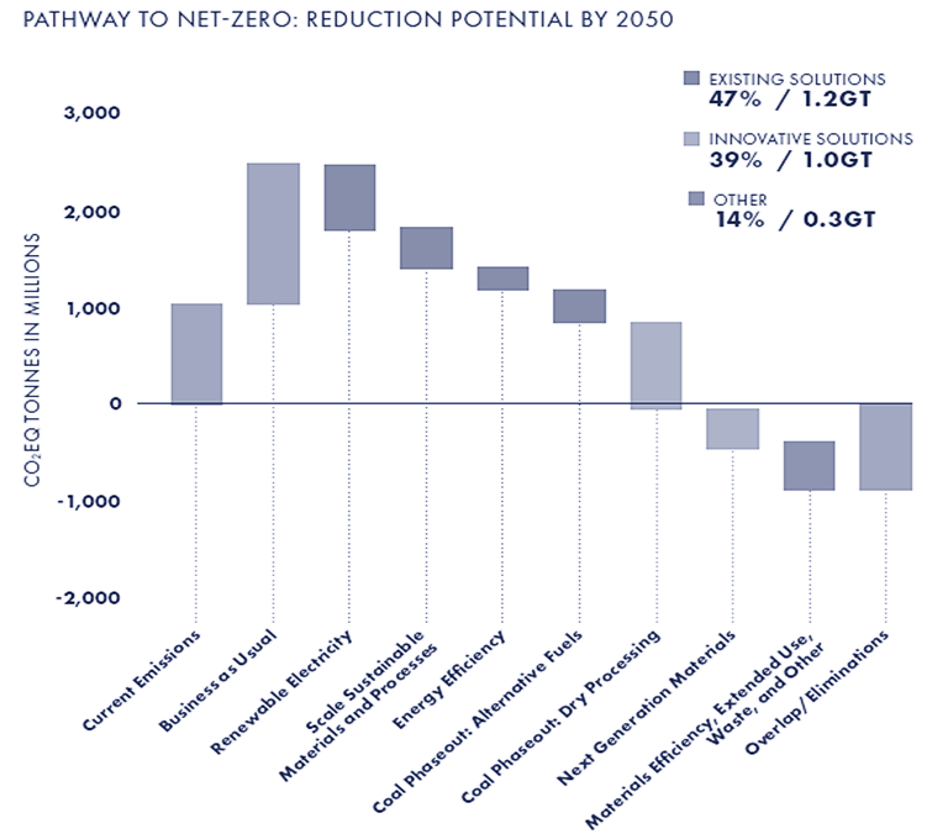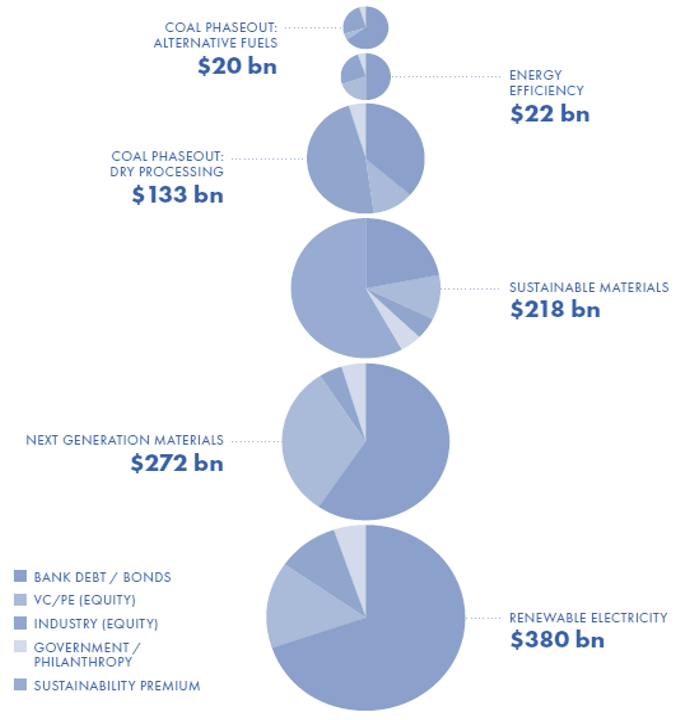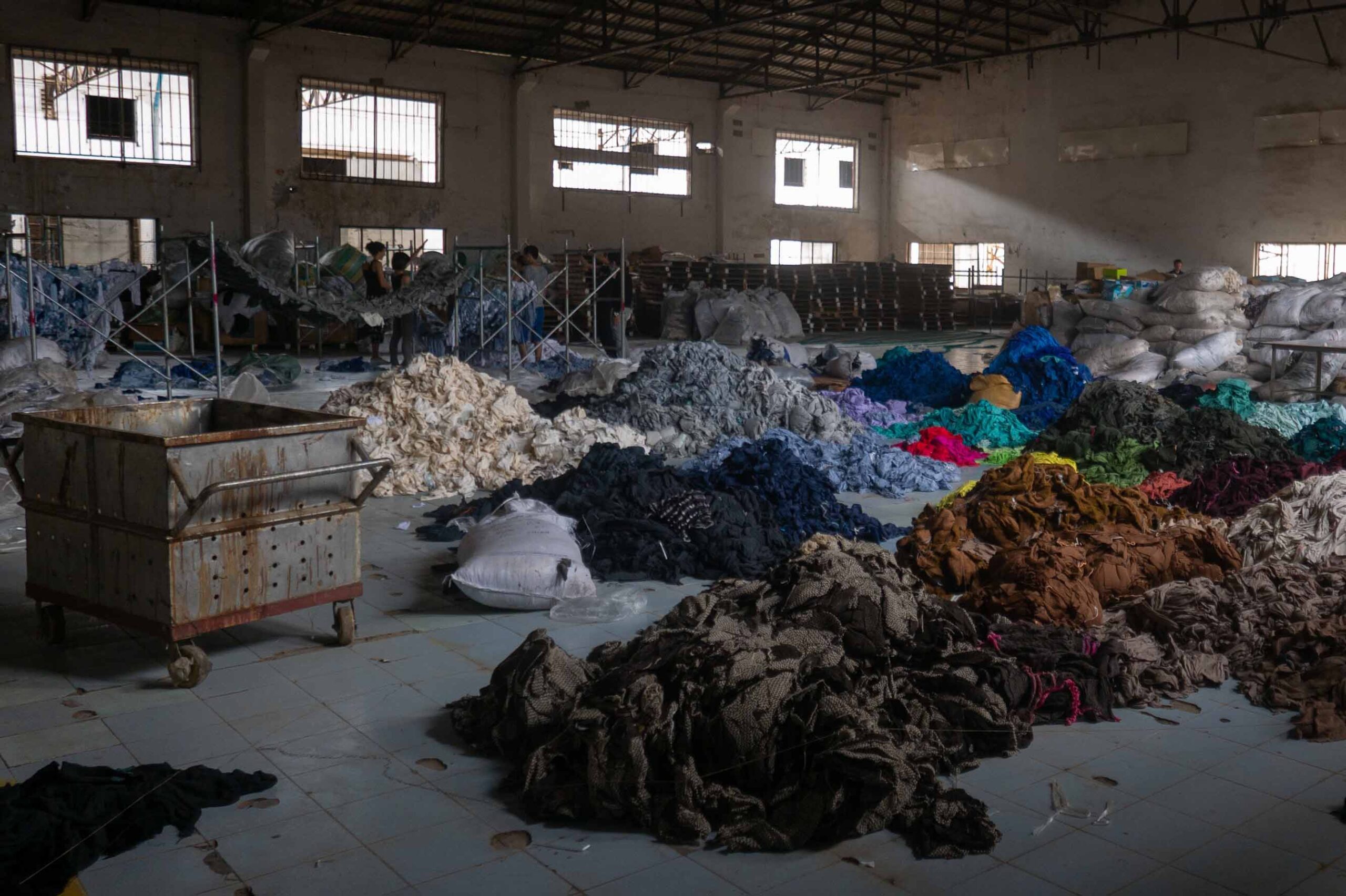Current fashion supply chains are ranked amongst the most wasteful and polluting on earth, built on extraction of large amounts of natural resources and a linear production and consumption process. Given this, fashion production and consumption have resulted in significant and irreparable effects on the planet. The effect of this industry, which is expected to continue its rapid growth in volume of ~4% Compounded Annual Growth Rate (CAGR) for the next 10-15 years, are most felt in terms of water consumption, energy emissions, waste creation and chemical usage1.
Environmental impact
The current fashion industry’s impact on the environment through intensive energy, soil, and water consumption, and atmospheric systems during the whole process from fibre to fabrics currently adds up to 8% of global carbon emissions, as well as 20% of industrial wastewater2. Every year, global emissions from textile production are equivalent to 1.2 billion tonnes of CO2, a figure that outweighs the carbon footprint of international flights and shipping combined3. After food, housing and mobility, European consumption of textiles has the fourth highest impact on the environment and climate change and is one of the top three pressures on water and land use as well as the top five in terms of raw material use and greenhouse gas emissions4.
According to a recent working paper of the World Resource Institute and apparel impact institute5, total GHG emissions for 2019 for the apparel sector are estimated to be 1.025 Gt of carbon dioxide equivalent (CO2e). Furthermore, assuming business-as-usual growth for the sector, emissions are projected to be 1.588 Gt in 2030 and 2.5 Gt by 2050.
Scope 3 Emissions represent the most significant greenhouse gas impact. On average, 96% of emissions stem from Scope 3 across those fashion brands with approved science-based targets (SBTs). Moreover, within Scope 3 emissions, over 78% come from upstream emissions (purchased goods and services), with the remaining 22% from downstream emissions6.
Therefore, to reach net-zero, solutions to decarbonize Scope 3 emissions are imperative. Net-zero can be achieved. However, that requires an aggressive acceleration in the implementation of currently existing solutions and a substantially higher focus on driving innovative solutions.
Financing the solutions to reach net-zero
Within this context, at the end of 2021, the apparel impact institute and Fashion for good have published a report which identifies 7 solutions that can lead to a carbon neutral fashion sector by 2050. These solutions are a mix of existing and innovative solutions combined with a shift to circular business models and more responsible consumption.

Financing will be needed to support technological innovation, to push for a transition to new circular business models, to increase the availability of preferred materials and to move away from fossil fuels by pushing utilization of renewable energy sources and energy efficiency. These solutions shall be coupled with a change in consumer behavior and not less importantly with improved labor conditions and fair wages7.
The total investment required to fund the entire range of solutions has been estimated to just over USD 1 trillion. 61% of the financing will be required to implement the existing solutions, with the remaining 39% of funding required to further develop, scale and implement the key innovative solutions.
In most cases, multiple types of financing will be involved in a single project. Projects with higher risk will typically have a higher percentage of equity capital, whereas projects with lower risk will have a higher percentage of debt capital. However, nearly all projects will include a mix of both debt and equity capital8.

Top Fashion brands and retailers are increasingly committing to radically improve their environmental footprint. Over the last 5 years, we have seen a record number of European and US brands commit to more sustainable operations. Nonetheless, the road is still long and to meet and exceed these ambitious commitments, new technologies and innovative solutions must be introduced and implemented in order for the industry to move beyond the current linear “take, make, dispose” model, towards a model that is restorative and regenerative by design.
Footnotes
1 Fashion for Good (2019): Investing In Textile Innovation
2 Triodos Investment Manager (2021): Dress to change
3 Unearthed (2019): ‘A monstrous disposable industry’: Fast facts about fast fashion, https://unearthed.greenpeace.org/2019/09/12/fast-facts-about-fast-fashion/
4 European Environment Agency (2019): Textiles in Europe’s circular economy
5 WRI and aii (2021): Roadmap To Net Zero: Delivering Science-Based Targets In The Apparel Sector
6 WRI and aii (2021): Roadmap To Net Zero: Delivering Science-Based Targets In The Apparel Sector
7 The social impact of the fashion industry is not to be underestimated. With regards to the context of this blog, the focus is lying on the environmental impact.
8 Fashion for Good and aii (2021): Unlocking The Trillion-Dollar Fashion Decarbonisation Opportunity












